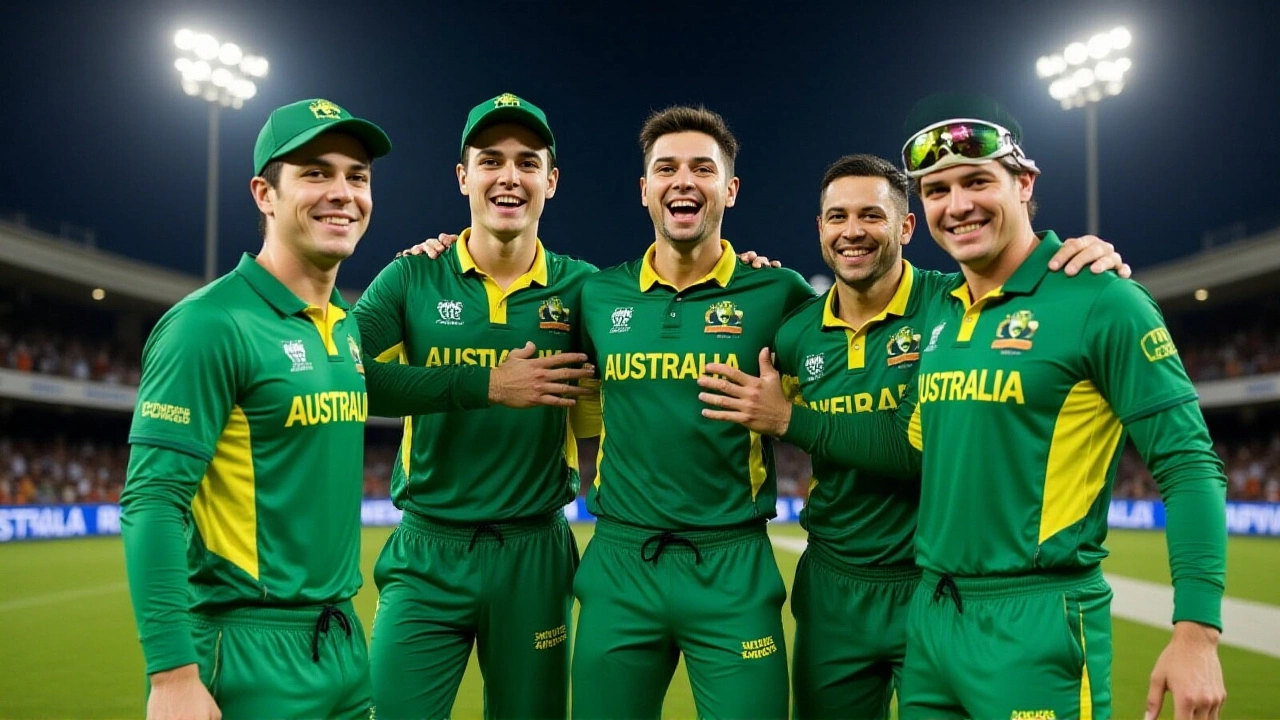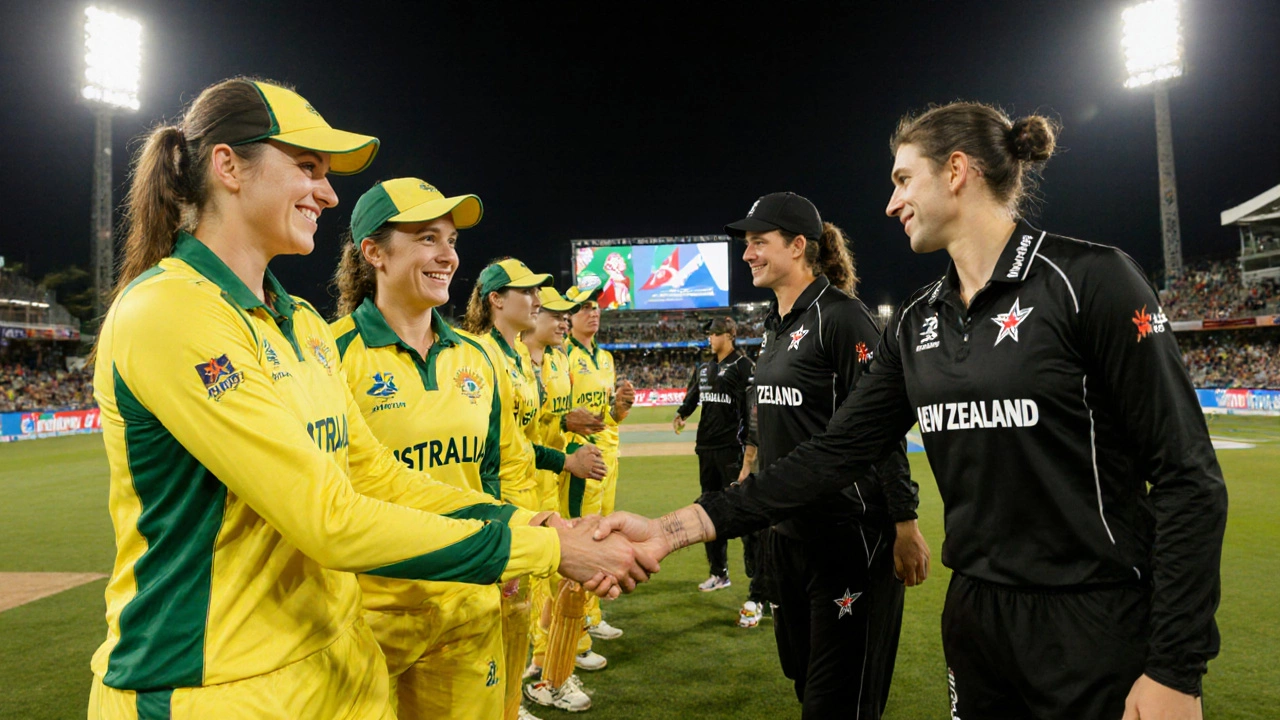
When Australia clinched the Chappell‑Hadlee Trophy despite barely getting a glimpse of the ball, the cricket world collectively gasped. The drama unfolded in the second Twenty‑20 International of the trans‑Tasman series, where a sudden downpour turned a promising contest into one of the shortest matches ever recorded. In a blink, only 13 deliveries were bowled before the umpires called an end‑of‑play, sealing the series for the Aussies and sending fans back to the bar for another round of speculation.
Background: A Rivalry That Writes Its Own Scripts
The Chappell‑Hadlee Trophy, named after two legendary cricketing families, has been the prize that fuels the fierce New Zealand‑Australia rivalry since 2004. Every T20I in the series is a chance for the Black Caps to topple the Baggy Greens, and vice‑versa, with the trophy changing hands as often as the weather does in the southern hemisphere. This 2025 edition was slated for three matches across New Zealand’s coastal venues, promising hot, dry conditions – a forecast that proved wildly optimistic.
Rain‑Struck Second T20I: 13 Balls, One Trophy
The rain‑soaked drama began just after the teams walked onto the field. Mitchell Marsh opened the innings for Australia, slapping a six that flew 87 metres over mid‑off. He ended not out on nine runs from eight balls before the heavens opened. Travis Head was the first wicket to fall, caught at backward point by Conway off Jacob Duffy’s single over. Head’s dismissal at five runs seemed almost symbolic – a brief flash before the storm took over.
Australia had reached 16 for 1 after 2.1 overs when the rain made a full‑time appearance. The ground crew tried to keep the outfield dry, but the downpour persisted, forcing the match officials to abandon the game after just 13 balls. By the rules, the series points were split, meaning Australia retained the Chappell‑Hadlee Trophy because they entered the match as the defending holders.
- Australia: 16/1 in 2.1 overs
- New Zealand: No innings completed
- Match duration: 13 legal deliveries
- Result: Match abandoned, trophy retained by Australia
Third T20I: A Battle Resumes Under Clear Skies
Come October 4, the skies cleared just in time for the decisive third encounter. Australia won the toss and elected to bowl first, a tactical choice that surprised some pundits but made sense given the earlier rain‑induced dearth of runs. New Zealand’s openers set a tentative platform, but by the end of the 7.4‑over spell, they found themselves at 3 wickets for 64 runs.
The chase is now a test of nerves. With the series tied on points, every boundary will be dissected, every dot ball will be debated on social media, and the final result will determine who walks away with the trophy for the next two years.
Statistical Snapshot: Who’s Doing What?
Even with a truncated second match, individual performances have already started to paint a picture of the series narrative.
Tim Robinson of New Zealand tops the run‑scoring chart with 109 runs, edging ahead of Australia’s Mitchell Marsh who has accumulated 94 runs across the two matches that actually saw play. Travis Head contributed 36 runs before the rain cut his innings short, while New Zealand’s Daryl Mitchell added 34. In the lower order, Matt Short has 31 runs, and Tim David chipped in 21.
On the bowling side, Jacob Duffy recorded figures of 1/13 from a single over, while Matt Henry bowled one tidy over for just two runs.
Why the Trophy Matters Beyond the Scoreboard
The Chappell‑Hadlee Trophy isn’t just a piece of silverware; it’s a cultural touchstone that reflects centuries of cricketing rivalry. For Australian fans, retaining the trophy reinforces the narrative of dominance in the shorter format. For New Zealand, the loss fuels a renewed hunger – a chance to rewrite history and add another chapter to the family name of Hadlee.
Beyond national pride, the series carries weight for the players’ standing ahead of the 2026 ICC T20 World Cup. Performances here often tip the scales when selectors finalize squads, meaning every run or wicket can be a ticket to the global stage.
Looking Ahead: What’s Next for Both Sides?
Should Australia clinch the third match, they’ll complete a 2‑0 series win on the back of a rain‑abandoned game – a scenario that feels almost unfair to New Zealand supporters but is fully within the rules. A New Zealand victory, however, would level the series at 1‑1 and force a tie‑breaker in the form of a final T20I scheduled for later in the month.
Both cricket boards have already hinted at potential squad rotations ahead of the World Cup, with younger talents like Xavier Bartlett (AUS) and Bevon Jacobs (NZ) pushing for permanent spots. The T20I series, rain‑filled or not, serves as a live lab for those decisions.

Frequently Asked Questions
How does the rain‑abandoned match affect the series outcome?
Because Australia entered the second T20I as the defending holders, the match being called off meant they automatically retained the Chappell‑Hadlee Trophy. The series now hinges on the third match for a decisive win.
Who is currently leading the run‑scoring charts?
New Zealand’s Tim Robinson tops the list with 109 runs, followed closely by Australia’s Mitchell Marsh with 94 runs.
What does the Chappell‑Hadlee Trophy symbolize for the two nations?
It represents the historic cricketing rivalry between Australia and New Zealand, honoring the Chappell and Hadlee families, and serves as a benchmark for T20 supremacy in the region.
Which players are likely to secure spots for the 2026 T20 World Cup?
Strong performances from Mitchell Marsh, Jacob Duffy and the emerging talent Xavier Bartlett have put them in the conversation, while New Zealand’s Tim Robinson and Daryl Mitchell are already strong candidates.
When and where is the next trans‑Tasman T20I scheduled?
The series concludes with the third match on October 4, 2025, at the Wellington Regional Stadium, followed by a potential fourth fixture later in the month if the series ends in a tie.